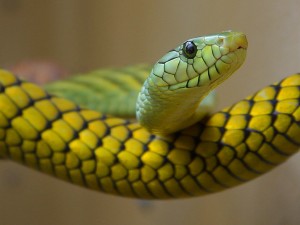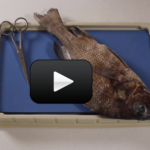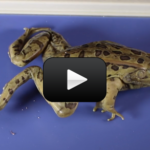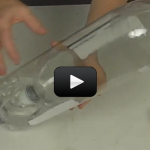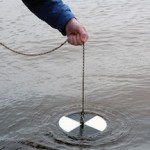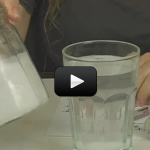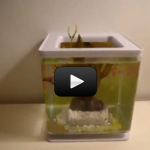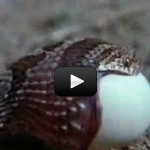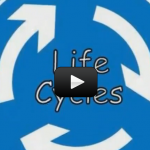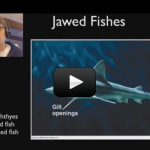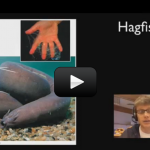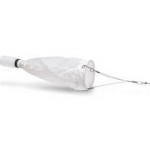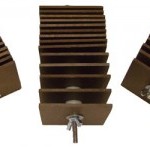Perch Dissection
Dissection in biology provides a hands-on education above and beyond reading a textbook. By seeing, touching and exploring different organs, muscles and tissues inside an animal and seeing how they work together allows you to really understand your own body and appreciate the amazing world around us. And it's not hard - you can dissect a … Continue reading "Perch Dissection" |
Dissecting a Frog
Dissection in biology provides a hands-on education above and beyond reading a textbook. By seeing, touching and exploring different organs, muscles and tissues inside an animal and seeing how they work together allows you to really understand your own body and appreciate the amazing world around us. And it’s not hard – you can dissect a … Continue reading "Dissecting a Frog" |
Terraqua Column
How does salt affect plant growth, like when we use salt to de-ice snowy winter roads? How does adding fertilizer to the soil help or hurt the plants? What type of soil best purifies the water? All these questions and more can be answered by building a terrarium-aquarium system to discover how these systems are … Continue reading "Terraqua Column" |
Finding the Secchi Depth
Often marine scientists as well as fisherman want to test the murkiness (or turbidity) of the water. How can you do this quickly and accurately? Well, first you’ll need a Secchi Disk. With the cheap, easy-to-make Secchi Disk you can test water quality like a pro! |
Homemade Hydrometer
With a name like hydrometer you might pause and say: “…a what?” You might have even gone a step further and added “why do I want one of those?” Simply put, hydrometers test the density of liquids. Specifically, they compare the density of liquids to the density of water (a comparison called the specific gravity … Continue reading "Homemade Hydrometer" |
Make a Waterscope
As you walk around your neighborhood, you probably see many other people, as well as some birds flying around, maybe some fish swimming down a local stream, and perhaps even a lizard darting behind a bush or a frog sitting contently on top of a pond. Most likely, you know that all of these living … Continue reading "Make a Waterscope" |
Lizard Strike
Your brain is divided into two sides, called hemispheres. Through experiments, scientists have determined that each side is responsible for different things. We’ll talk more about this in Unit 19, but for now, just know that the left side of the brain is mainly responsible for language, while the right side is in charge of … Continue reading "Lizard Strike" |
The Vanity of a Betta
Mirror, Mirror, on The Wall… Did you know that a betta fish has a special relationship with a mirror? When you look in a mirror, you recognize that what you see is your reflection. Not all animals realize this. Many animals think the animal they see is another member of their species, and react with … Continue reading "The Vanity of a Betta" |
Snakes!
Lizards and snakes make up the largest order of the reptiles. Although we often think of them differently, snakes are basically legless lizards, from a biological perspective. Reptiles in this group are characterized by having scales or shields on their body and by having a lower jawbone that can be moved independently from the braincase. … Continue reading "Snakes!" |
Amphibians
About 6,000 species of animals belong to the class amphibia, commonly called the amphibians. A class is a group of living things in the same phylum or sub-phylum (in this case, vertebrata) that share certain characteristics. One of the most important characteristics they share is that they begin life in the water, but then spend … Continue reading "Amphibians" |
Ray-Finned Fishes, Lobe-Finned Fishes, and Sharks!
The cartilaginous fishes are a group of about 1,000 species and share many things in common, including the presence of jaws, paired fins, a two-chambered heart, and bodies made of cartilage. By far the largest group of fish are the bony fish. Eight species of bony fish make up a small group called lobe-finned fish, … Continue reading "Ray-Finned Fishes, Lobe-Finned Fishes, and Sharks!" |
Jawless Fish
There are 57,739 species of vertebrates. The majority of these vertebrates can be classified as fish. This includes jawless species of fish and cartilaginous fishes. (Those are fish with skeletons made of cartilage, the same material that makes up your nose.) Fish are almost always ectothermic. This means that the body temperature of fish changes … Continue reading "Jawless Fish" |
Cheap and Easy Plankton Net
What are the most important animals in the ocean? Whales? Sharks? Giant squids? Think smaller. Arguably, the most important animals in the ocean are found at the bottom of the food chain—the tiny creatures called plankton. Plankton are microscopic animals that are found all over the world in large bodies of water. They have many … Continue reading "Cheap and Easy Plankton Net" |
Hester-Dendy Sampler
The Hester-Dendy sampler makes it easy to collect marine samples. With some simple parts we can construct a device that we will leave in the water for a couple weeks. Then, presto! We have samples ready to study. It’s the no-muscle way to get specimens. Some creatures to look for in your Hester-Dendy sampler include … Continue reading "Hester-Dendy Sampler" |

